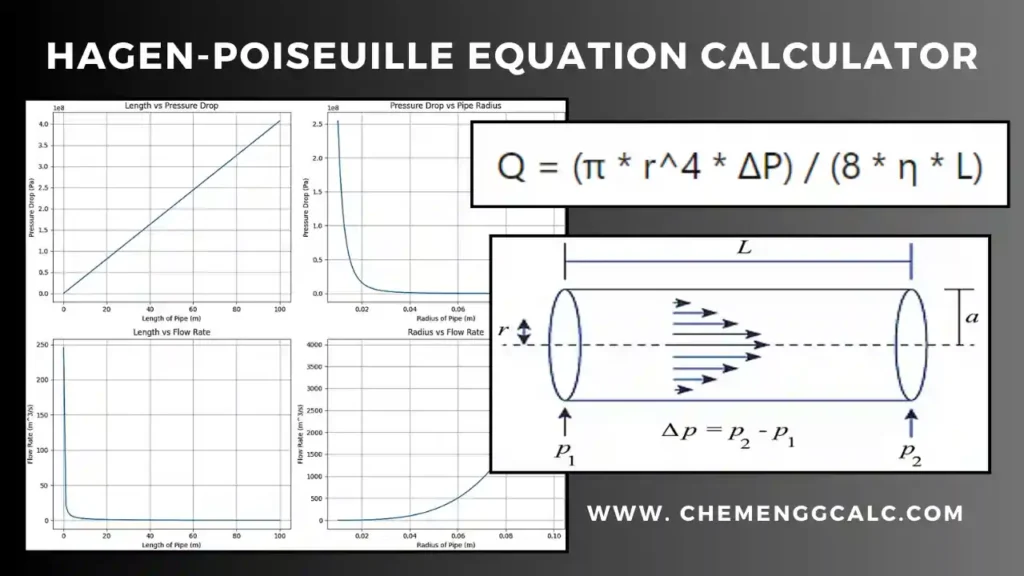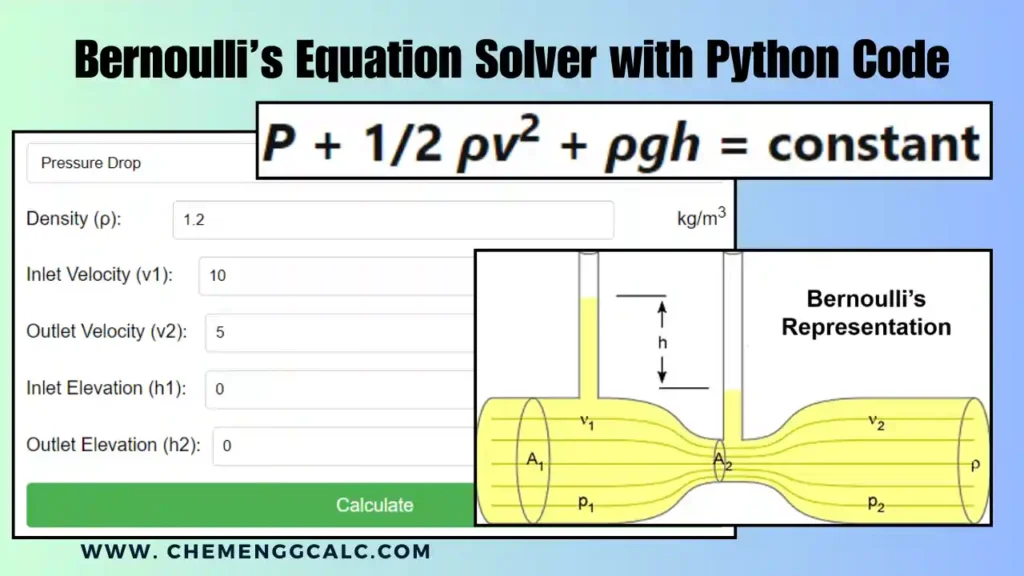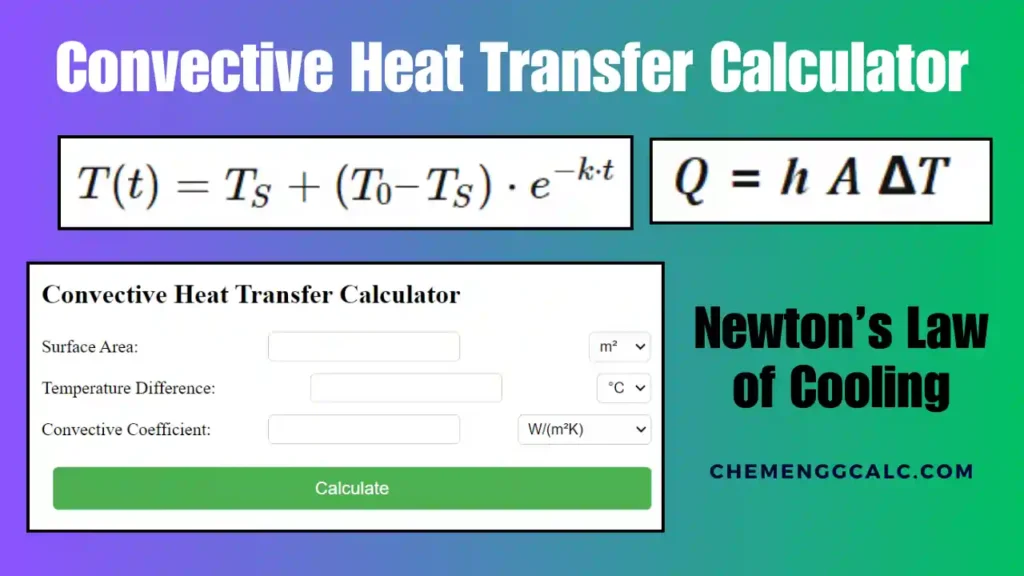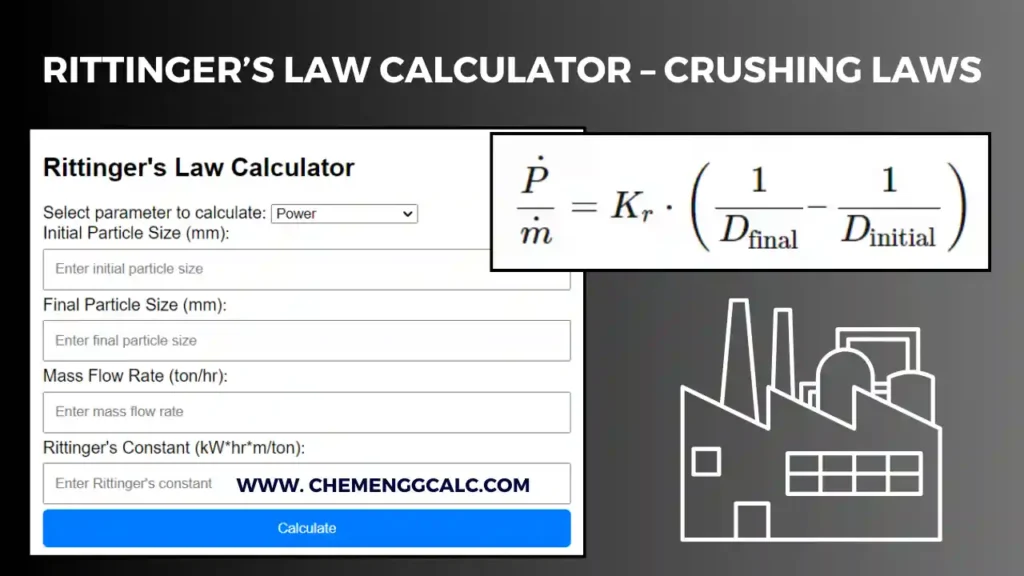Table of Contents
When fluids move through materials like soil, rocks, or filters, they flow through tiny connected spaces called pores. Darcy’s Law is a fundamental equation that explains how the volumetric flow rate depends on the pressure difference for flow through porous media.
This law is essential for modeling groundwater recharge, controlling pollution, and extraction which helps us manage natural resources and protect the environment.
Darcy’s Law Equation
Darcy’s Law states that the volume of fluid flowing through the medium per unit time (volumetric flow rate) is directly proportional to the cross-sectional area, the hydraulic conductivity, and the hydraulic gradient, while inversely proportional to the fluid’s viscosity and the flow path length.
Mathematically, it is expressed as:
\[Q = -K A \frac{\Delta h}{L} = K i A\]

In terms of pressure difference, the darcy’s law expression is written as:
\[Q = \frac{k A \Delta P}{\mu L}\]
where in S.I units:
- Q is the volumetric flow rate (m3/s)
- \(K = \frac{k \rho g}{\mu}\), K is the hydraulic conductivity (m s)
- \(k\) is the medium permeability (m2)
- i is the head hydraulic gradient (dimensionless)
- A is the cross-sectional area (m2)
- Δh is the hydraulic head difference (mm)
- ΔP is the pressure difference (Pa)
- μ is the dynamic viscosity (Pa s)
- L is the flow path length (mm)
Note: In darcy’s Law the negative sign indicates that flow direction from high to low hydraulic head.
Darcy’s law is valid for laminar flow (Reynolds number < 10), i.e. linear relationship between flow rate and hydraulic gradient. It assumes medium to be saturated, homogeneous with steady-state conditions and incompressible fluid
Related: Friction Factor Calculator Moody’s Diagram for Smooth and Rough Pipes
Related: Head Loss or Pressure Loss Calculator using Darcy-Weisbach Equation
Darcy’s Law Calculator
This Darcy’s Law calculator computes fluid volumetric flow rates through porous media in two modes: Pressure Drop (Q = -kAΔP/(μL)) and Hydraulic Head Gradient (Q = -KA(Δh/L), where K = kρg/μ).
This calculator is designed for both practical use and educational purposes in fields like hydrogeology and petroleum engineering.
Related: Cake Filtration Calculation for Filter Medium and Specific Cake Resistance
Related: Ergun Equation Calculator for Pressure Drop in Packed Bed Column
Darcy’s Law Assumptions
Darcy’s Law has several key assumptions for its validity. These assumptions are important for understanding the limitations and applicability of this law:
- Laminar flow: The fluid flow is assumed to be slow and viscous, applicable for Reynolds number 1 to 10.
- Single-phase flow: Only one fluid is flowing through the porous medium, it does not account for multiphase flow scenarios, such as oil and water flowing simultaneously through rock.
- Homogeneous porous medium: The porous material is assumed to be uniform in composition and structure throughout i.e consistent permeability and porosity across the entire medium.
- Incompressible and Isothermal Flow: The fluid is assumed to have constant density and temperature throughout the flow process.
Related: Hagen-Poiseuille Equation Calculator / Poiseuille’s Law Solver
Related: 10 Mostly used Dimensionless Numbers in Chemical Engineering
Real-Life Application of Darcy’s Law
Darcy’s Law are having numerous real-world applications across various fields, here we will discuss some of them and how are they applied:
- Hydrogeology and Groundwater Management
- To analyze water flowing through aquifers, it helps hydrogeologists understand and predict the groundwater movement which is important for water resource management.
- Wetland Restoration – To design and manage constructed wetlands for water treatment and habitat restoration.
- Petroleum engineers apply Darcy’s Law to understand fluid flow through oil and gas reservoirs. This helps in estimating reservoir properties and predicting production rates
- Applied in designing filtration systems for various industries, including water treatment plants and chemical processing facilities.
- Soil Mechanics: To analyze seepage through earth dams and embankments which ensures structural stability and safety.

Example Problem on Darcy’s Law
A soil sample 10 cm in diameter is placed in a tube 1 m long. A constant supply of water is allowed to flow into one end of the soil at A, and the outflow at B is collected by a beaker. The average amount of water collected is 1 cm³ for every 10 seconds. The tube is inclined. Determine the: (a) Hydraulic gradient (b) Flow rate (c) Average velocity (d) Seepage velocity, if the void ratio e = 0.6 (e) Coefficient of permeability.

Data given:
- Diameter of soil sample = 10 cm
- Length of the tube = 1 m = 100 cm
- Height difference = 2 – 0.8 = 1.2 m = 120 cm
- Volume of water collected= 1 cm3 per 10 sec
- Void ratio = 0.6
(a) To calculatue the Hydraulic Gradient, we need height difference and length of the tube
i = Δh / L = 120/100 = 1.2
(b) To calculate the flow rate 1 cm3 water collected every 10 second, therefore
Flow Rate = Volume collected / time
Flow Rate = 1 / 10 = 0.1 cm3/sec
(c) To calculate the average velocity, we need to cross sectional area
Area = 3.14 * (5)2 = 78.5 cm2
V = Q/A = 0.1 / 78.5 = 0.00127 cm/sec
(d) To calculate the seepage velocity, we need the porosity of the soil sample, let us first calculate the porosity using void ratio
ε = n/(n+1) = 0.6/(1+0.6) = 0.375
Vs = V/ε = 0.00127/ 0.375 = 0.00339 cm/s
(e) To caluculate the coefficient of permeability or hydaulic conductivity we need the hydraulic gradient value, using darcy’s law of equation, Q = K i A
K = Q / i A = 0.1 / (1.2 * 78.5)
K = 0.001061 = 10.61 x 10-4 cm/s
Thus, the coefficient of permeability for the given soil sample is 10.61 x 10-4 cm/s.
Related: Power Consumption Calculator for an Agitated Vessel – Step by Step Guide
Darcy’s Law Calculation using Python
The Python code helps user to determine the hydraulic gradient, flow rate, average velocity, seepage velocity, and coefficient of permeability based on given soil sample dimensions, water collection rate, and void ratio.
Note: You can easily experiment with different soil parameters by modifying the input values in this code and running it in your preferred Python environment.
import math
# Given values
diameter = 10 # cm
length = 100 # cm (1 m = 100 cm)
flow_volume = 1 # cm^3
time = 10 # seconds
void_ratio = 0.6
# (a) Hydraulic gradient (i)
# If the tube is horizontal i = dh/l, dh = change in head
#If tube is inclined
height_diff = 120 # cm
hydraulic_gradient = height_diff / length
# (b) Flow rate (Q)
flow_rate = flow_volume / time
# (c) Average velocity (v)
radius = diameter / 2
area = math.pi * (radius ** 2)
average_velocity = flow_rate / area
# (d) Seepage velocity (vs)
porosity = void_ratio / (1 + void_ratio)
seepage_velocity = average_velocity / porosity
# (e) Coefficient of permeability (k)
# Darcy's Law: Q = k * i * A => k = Q / (i * A)
coefficient_of_permeability = flow_rate / (hydraulic_gradient * area)
# Print the results
print("(a) Hydraulic gradient:", hydraulic_gradient)
print("(b) Flow rate (cm^3/s):", flow_rate)
print("(c) Average velocity (cm/s):", average_velocity)
print("(d) Seepage velocity (cm/s):", seepage_velocity)
print("(e) Coefficient of permeability (cm/s):", coefficient_of_permeability)Output:
(a) Hydraulic gradient: 1.2
(b) Flow rate (cm^3/s): 0.1
(c) Average velocity (cm/s): 0.0012732395447351628
(d) Seepage velocity (cm/s): 0.003395305452627101
(e) Coefficient of permeability (cm/s): 0.0010610329539459688
Resources:
- “Unit Operations in Chemical Engineering” (McCabe et al.)
- “Particle Technology and Separation Processes” (Richardson et al.)
- “Chemical Engineering Design: Principles, Practice and Economics of Plant and Process Design” (Towler and Sinnott)
- Handbook of Chemical Engineering calculations, Chopey et al, McGraw Hill, 2004
Disclaimer: The Solver provided here is for educational purposes. While efforts ensure accuracy, results may not always reflect real-world scenarios. Verify results with other sources and consult professionals for critical applications. Contact us for any suggestions or corrections.







Thank you so much for your kind words! 😊 Yes, this is my own work. We also provide customizable options and services tailored to different industries and user needs. Feel free to explore or test out other pages on the site to get a better idea of what we can do. Your feedback means a lot and helps us keep improving! 🙌